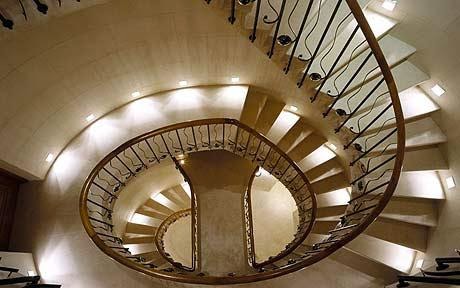Basic Design Decisions-Part 1
Choice of Lighting System
The function of the room, the occupancy, and the visual tasks to be carried out there and the style of the decor will all influence the choice of the lighting system to be used.For the sake of convenience , the lighting systems employed in interiors can be divided into those having a mostly functional purpose- the primary systems and those that take over, as it were , where the functional lighting leaves off- the secondary systems.
Primary Lighting Systems
The most common primary lighting systems are those providing either:
- General Lighting
- Localised Lighting
- Local lighting + general lighting
General Lighting
A general lighting system provides the required horizontal illuminance over the total area with a certain degree of uniformity. When used alone , the average illuminance should be equal to the required illuminance for the specific visual task. it is there fore widely employed in such places as large, open plan offices, work shops, factory halls and storage areas..
Downlighting
General lighting is generally accomplished using downlighting, this involves the use of luminaires whose light emitting surface is directed downwards. the lighting is therefore direct. This also means that a certain degree of modelling will be produced.
Uplighting
General lighting can also be provided in the form of uplighting . Here the light emitting surface of the luminaire is aimed upwards, with the light being reflected downwards from the ceiling and walls. Such lighting is always diffuse and indirect, and provides rather limited modelling.
Localised Lighting
Like general lighting, localised lighting provides illumination for the entire room, but with the luminaires functionally arranged with respect to the visual tasks or work areas. Away from these main places of interest( as in circulation areas) the illuminance is normally limited to approximately 50 percent of the illuminance needed for the visual task.
Localised lighting can also be downlighting or uplighting
Local Lighting + General Lighting
Local lighting is produced by positioning downlighting luminaires close to the visual task so as to illuminate only a small area. It is an economical way of providing high illuminance over a small area, and usually permits of some adjustments of the lighting to suit the individual. Local lighting by itself is seldom desirable. To meet the requirements pertaining to luminance differences in the task area, the local lighting should be used in conjunction with general lighting that is at least 20 percent of the local lighting level .
Secondary Lighting Systems
It is usually required to create appropriate ambience.
These include
- Accent Lighting
- Effect Lighting
- Decorative Lighting
- Architectural Lighting
- Mood Lighting
Accent Lighting
One way in which lighting can help to create ambience and bring out the best of the interior decor is to emphasize particular objects or features, or to draw attention to apart of the field of view. This is achieved using accent lighting. Most accent lighting is created using spots.
Effect Lighting
It is used where it is wished to actually create an attractive feature.Here the light itself that provides the interest, and not the object illuminated by it. This can be achieved using ceiling recessed downlights to create attractive light patterns on an adjacent walls.
Decorative Lighting
Decorative lighting is the name used to describe the use of attractive luminaires or lamps to provide points of interest in an interior.
Architectural Lighting
Also called structural lighting is lighting having a close correlation with the architecture of the interior, which it seeks to draw attention to in one way or another. Generally the source is hidden from the view.
Mood Lighting
Mood lighting is not a specific lighting techniques as such. Rather it is the possibility to switch or dim the various lighting elements in such a way as to create a mood or ambience that is in keeping with the activity taking place.
Courtesy Text :Philips Lighting Manual











Comments
Post a Comment